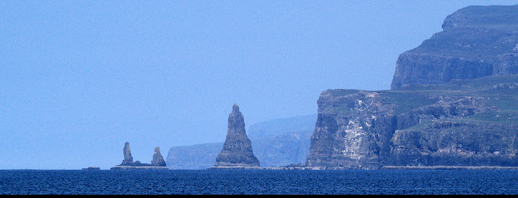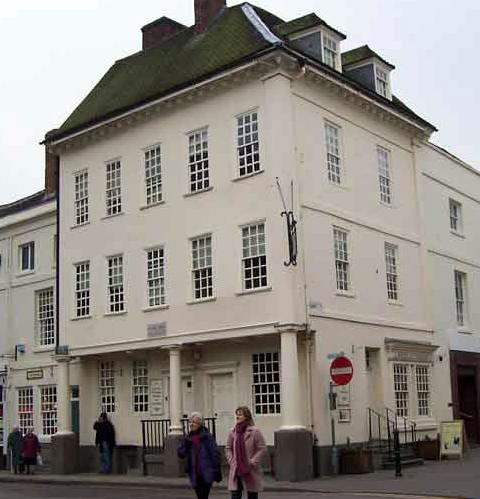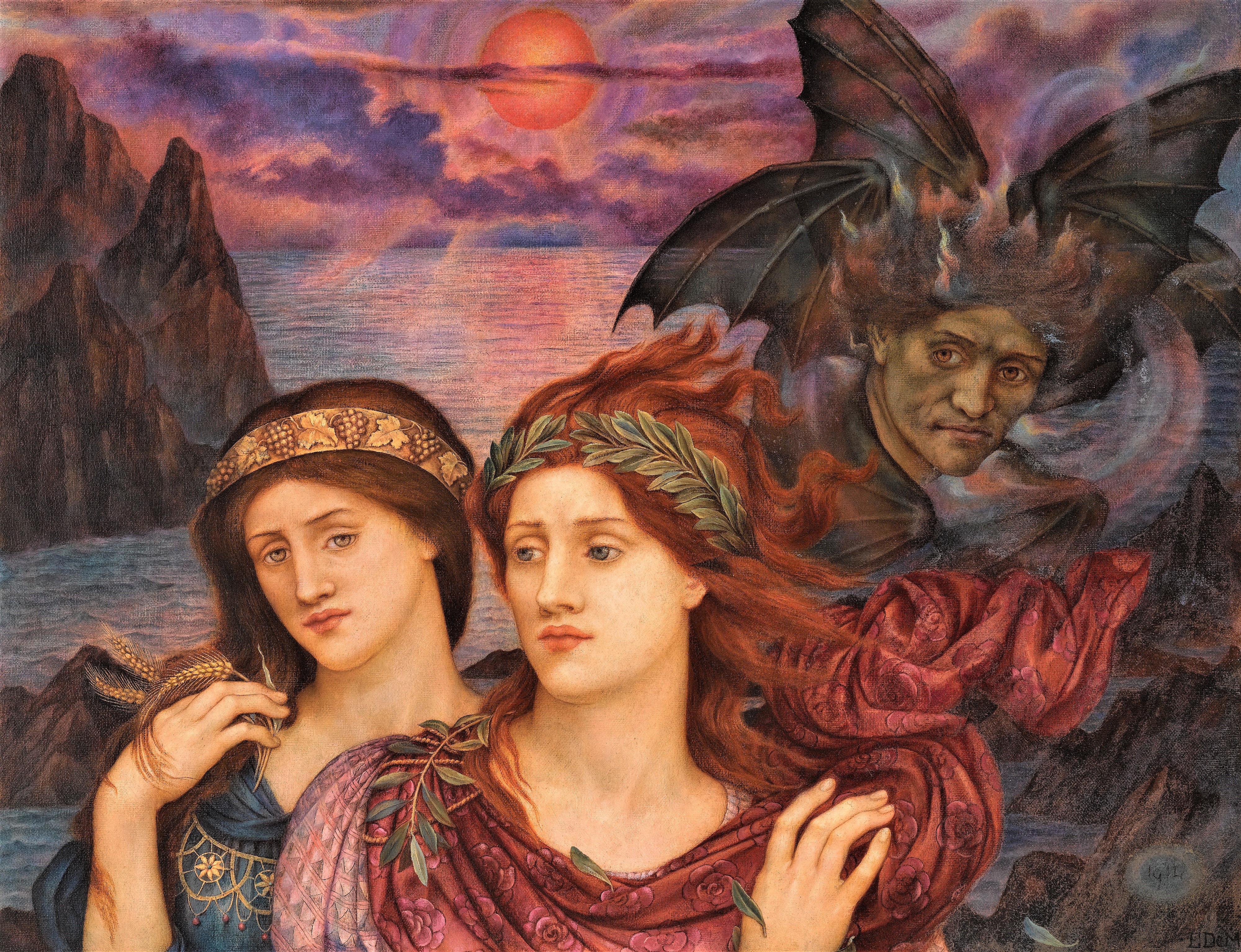|
John Macpherson (minister)
John Macpherson (1710–1765) was a Scottish minister and antiquarian. Life The son of Dugald Macpherson, minister at Duirinish, Skye, he studied classics at Aberdeen University, graduating M.A. 1728, and D.D. 1761. He was minister of Barra in the Outer Hebrides, 1734 to 1742, and of Sleat on Skye, from 1742 to 1765. Works Macpherson published ''Critical Dissertations on the Origin, Antiquities, Language, Government, Manners, Religion of the Ancient Caledonians, their Posterity, the Picts, and the British and Irish Scots'', London, 1768. This work on the Ossian controversy upheld the authenticity of the poems attributed to Ossian. Though not closely related, James Macpherson, author of " The Works of Ossian" (1765), and John Macpherson knew each other well. It has been suggested that they were complicit in the creation of the works. John Macpherson's "Ancient Caledonians" were from Gaul, ancestors of the Picts, Scots and Irish, a theory also adopted by James Macpherson. ''C ... [...More Info...] [...Related Items...] OR: [Wikipedia] [Google] [Baidu] |
Duirinish, Skye
Duirinish ( gd, Diùirinis) is a peninsula and civil parish on the island of Skye in Scotland. It is situated in the north west between Loch Dunvegan and Loch Bracadale. Geography Skye's shape defies description and W. H. Murray wrote that "Skye is long, but what might be its breadth is beyond the ingenuity of man to state". Malcolm Slesser suggested that its shape "sticks out of the west coast of northern Scotland like a lobster's claw ready to snap at the fish bone of Harris and Lewis", which would make Duirinish one of the claws. The main peaks are Healabhal Mhòr and Healabhal Bheag, which reach and respectively, and are better known as MacLeod's Tables. They lie in the centre of the peninsula and their distinctive shapes are visible throughout much of north west Skye. Dunvegan Head marks the north end of the peninsula and Idrigill Point the south. The west coast is now uninhabited and offshore there are only a few small islets: An Dubh Sgeir, An Stac and MacLeod's Maid ... [...More Info...] [...Related Items...] OR: [Wikipedia] [Google] [Baidu] |
Song Of Moses
The Song of Moses is the name sometimes given to the poem which appears in Deuteronomy of the Hebrew Bible, which according to the Bible was delivered just prior to Moses' death on Mount Nebo. Sometimes the Song is referred to as Deuteronomy 32, despite the fact that strictly speaking Deuteronomy chapter 32 contains nine verses (44–52) which are not part of the Song. Most scholars hold that it was composed between the tenth and eighth centuries BCE, although dates as early as the twelfth century or as late as the fifth have been proposed. Biblical narrative According to , YHVH met with Moses and his nominated successor Joshua at the " tabernacle of meeting" and told them that after Moses' death, the people of Israel would renege on the covenant that YHVH had made with them, and worship the gods of the lands they were occupying. YHVH told Moses to write down the words of a song and teach it to the community, so that it would be a "witness for Me against the children of Is ... [...More Info...] [...Related Items...] OR: [Wikipedia] [Google] [Baidu] |
1710 Births
Year 171 ( CLXXI) was a common year starting on Monday (link will display the full calendar) of the Julian calendar. At the time, it was known as the Year of the Consulship of Severus and Herennianus (or, less frequently, year 924 ''Ab urbe condita''). The denomination 171 for this year has been used since the early medieval period, when the Anno Domini calendar era became the prevalent method in Europe for naming years. Events By place Roman Empire * Emperor Marcus Aurelius forms a new military command, the ''praetentura Italiae et Alpium''. Aquileia is relieved, and the Marcomanni are evicted from Roman territory. * Marcus Aurelius signs a peace treaty with the Quadi and the Sarmatian Iazyges. The Germanic tribes of the Hasdingi ( Vandals) and the Lacringi become Roman allies. * Armenia and Mesopotamia become protectorates of the Roman Empire. * The Costoboci cross the Danube (Dacia) and ravage Thrace in the Balkan Peninsula. They reach Eleusis, near Athens ... [...More Info...] [...Related Items...] OR: [Wikipedia] [Google] [Baidu] |
Scottish Translators
Scottish usually refers to something of, from, or related to Scotland, including: *Scottish Gaelic, a Celtic Goidelic language of the Indo-European language family native to Scotland *Scottish English *Scottish national identity, the Scottish identity and common culture *Scottish people, a nation and ethnic group native to Scotland *Scots language, a West Germanic language spoken in lowland Scotland *Symphony No. 3 (Mendelssohn), a symphony by Felix Mendelssohn known as ''the Scottish'' See also *Scotch (other) *Scotland (other) *Scots (other) *Scottian (other) *Schottische The schottische is a partnered country dance that apparently originated in Bohemia. It was popular in Victorian era ballrooms as a part of the Bohemian folk-dance craze and left its traces in folk music of countries such as Argentina (" chotis" ... * {{disambiguation Language and nationality disambiguation pages ca:Escocès ... [...More Info...] [...Related Items...] OR: [Wikipedia] [Google] [Baidu] |
18th-century Ministers Of The Church Of Scotland
The 18th century lasted from January 1, 1701 ( MDCCI) to December 31, 1800 ( MDCCC). During the 18th century, elements of Enlightenment thinking culminated in the American, French, and Haitian Revolutions. During the century, slave trading and human trafficking expanded across the shores of the Atlantic, while declining in Russia, China, and Korea. Revolutions began to challenge the legitimacy of monarchical and aristocratic power structures, including the structures and beliefs that supported slavery. The Industrial Revolution began during mid-century, leading to radical changes in human society and the environment. Western historians have occasionally defined the 18th century otherwise for the purposes of their work. For example, the "short" 18th century may be defined as 1715–1789, denoting the period of time between the death of Louis XIV of France and the start of the French Revolution, with an emphasis on directly interconnected events. To historians who expand ... [...More Info...] [...Related Items...] OR: [Wikipedia] [Google] [Baidu] |
Sir John Macpherson, 1st Baronet
Sir John Macpherson, 1st Baronet (1745 – 12 January 1821), was a British administrator in India. He was the acting Governor-General of Bengal from 1785 to 1786. Early life Macpherson was born in 1745 at Sleat in the Isle of Skye, where his father, John Macpherson (1713–1765), was minister. His mother was Janet, daughter of Donald Macleod of Bernera. The father, son of Dugald Macpherson, minister of Duirinish, distinguished himself in classics at Aberdeen University (M.A. 1728, and D.D. 1761), and was minister of Barra in the presbytery of Uist (1734–42), and of Sleat (1742–65). He published ''Critical Dissertations on the Origin, Antiquities, Language, Government, Manners, and Religion of the Ancient Caledonians, their Posterity, the Picts, and the British and Irish Scots,'' London, 1768, and paraphrased the Song of Moses in Latin verse in ''Scots Magazine,'' vols. i. ix. xi. He upheld the authenticity of the poems assigned to Ossian, and Samuel Johnson declar ... [...More Info...] [...Related Items...] OR: [Wikipedia] [Google] [Baidu] |
Samuel Johnson
Samuel Johnson (18 September 1709 – 13 December 1784), often called Dr Johnson, was an English writer who made lasting contributions as a poet, playwright, essayist, moralist, critic, biographer, editor and lexicographer. The ''Oxford Dictionary of National Biography'' calls him "arguably the most distinguished man of letters in English history". Born in Lichfield, Staffordshire, he attended Pembroke College, Oxford until lack of funds forced him to leave. After working as a teacher, he moved to London and began writing for ''The Gentleman's Magazine''. Early works include '' Life of Mr Richard Savage'', the poems ''London'' and '' The Vanity of Human Wishes'' and the play ''Irene''. After nine years' effort, Johnson's '' A Dictionary of the English Language'' appeared in 1755, and was acclaimed as "one of the greatest single achievements of scholarship". Later work included essays, an annotated ''The Plays of William Shakespeare'', and the apologue '' The History of ... [...More Info...] [...Related Items...] OR: [Wikipedia] [Google] [Baidu] |
Second Sight
Extrasensory perception or ESP, also called sixth sense, is a claimed paranormal ability pertaining to reception of information not gained through the recognized physical senses, but sensed with the mind. The term was adopted by Duke University psychologist J. B. Rhine to denote psychic abilities such as intuition, telepathy, psychometry, clairvoyance, clairaudience, clairsentience, empathy and their trans-temporal operation as precognition or retrocognition. Second sight is a form of extrasensory perception, whereby a person perceives information, in the form of a vision, about future events before they happen (precognition), or about things or events at remote locations (remote viewing). There is no evidence that second sight exists. Reports of second sight are known only from anecdotes. Second sight and ESP are classified as pseudosciences. History In the 1930s, at Duke University in North Carolina, J. B. Rhine and his wife Louisa E. Rhine conducted an investigatio ... [...More Info...] [...Related Items...] OR: [Wikipedia] [Google] [Baidu] |
The Scots Magazine
''The Scots Magazine'' is a magazine containing articles on subjects of Scottish interest. It claims to be the oldest magazine in the world still in publication, although there have been several gaps in its publication history. It has reported on events from the defeat of the Jacobites through the Napoleonic wars to the Second World War and on to the creation of the new Scottish Parliament. History ''The Scots Magazine'' was originally published in January 1739. It was intended as a rival to the London-based ''Gentleman's Magazine'', in order that "our countrymen might have the production of every month sooner, cheaper and better collected than before". Its first issue, dated Monday 9 February 1739, cost 6d. and appeared in a blue cover with the motto ''Ne quid falsi dicere audeat, ne quid veri non audeat''. Popular through the 18th century, it innovated a register of births, marriages and deaths, which other journals soon copied. From 1759 until 1765 it was edited by William Sm ... [...More Info...] [...Related Items...] OR: [Wikipedia] [Google] [Baidu] |
William Robertson (historian)
William Robertson FRSE FSA Scot (19 September 1721 – 11 June 1793) was a Scottish historian, minister in the Church of Scotland, and Principal of the University of Edinburgh. "The thirty years during which epresided over the University perhaps represent the highest point in its history." He made significant contributions to the writing of Scottish history and the history of Spain and Spanish America. He was Chaplain of Stirling Castle and one of the King's Chaplains in Scotland. Early life Robertson was born at the manse of Borthwick, Midlothian, the son of Rev William Robertson (1686–1745), the local minister, and his wife Eleanor Pitcairn, daughter of David Pitcairne of Dreghorn. He was educated at Borthwick Parish School and Dalkeith Grammar School. The family moved to Edinburgh when his father became appointed minister of Lady Yester's Church in 1733. His father moved to Old Greyfriars Kirk in Edinburgh in 1736. He studied divinity at the University of Edinburgh (17 ... [...More Info...] [...Related Items...] OR: [Wikipedia] [Google] [Baidu] |
Aberdeen University
, mottoeng = The fear of the Lord is the beginning of wisdom , established = , type = Public research universityAncient university , endowment = £58.4 million (2021) , budget = £235.9 million (2020–21) , principal = George Boyne , rector = Martina Chukwuma-Ezike , chancellor = The Queen , students = () , undergrad = () , postgrad = () , academic_staff = 1,086 (2018) , administrative_staff = 1,489 (2018) , doctoral = , location = Aberdeen, Scotland, UK , campus = College town , free_label = , free = , colours = (university colours) , mascot = Angus the Bull , affiliations = , website = , logo = University of Aberd ... [...More Info...] [...Related Items...] OR: [Wikipedia] [Google] [Baidu] |
Gaul
Gaul ( la, Gallia) was a region of Western Europe first described by the Romans. It was inhabited by Celtic and Aquitani tribes, encompassing present-day France, Belgium, Luxembourg, most of Switzerland, parts of Northern Italy (only during Republican era, Cisalpina was annexed in 42 BC to Roman Italy), and Germany west of the Rhine. It covered an area of . According to Julius Caesar, Gaul was divided into three parts: Gallia Celtica, Belgica, and Aquitania. Archaeologically, the Gauls were bearers of the La Tène culture, which extended across all of Gaul, as well as east to Raetia, Noricum, Pannonia, and southwestern Germania during the 5th to 1st centuries BC. During the 2nd and 1st centuries BC, Gaul fell under Roman rule: Gallia Cisalpina was conquered in 204 BC and Gallia Narbonensis in 123 BC. Gaul was invaded after 120 BC by the Cimbri and the Teutons, who were in turn defeated by the Romans by 103 BC. Julius Caesar finally subdued the remaining p ... [...More Info...] [...Related Items...] OR: [Wikipedia] [Google] [Baidu] |





.jpg)